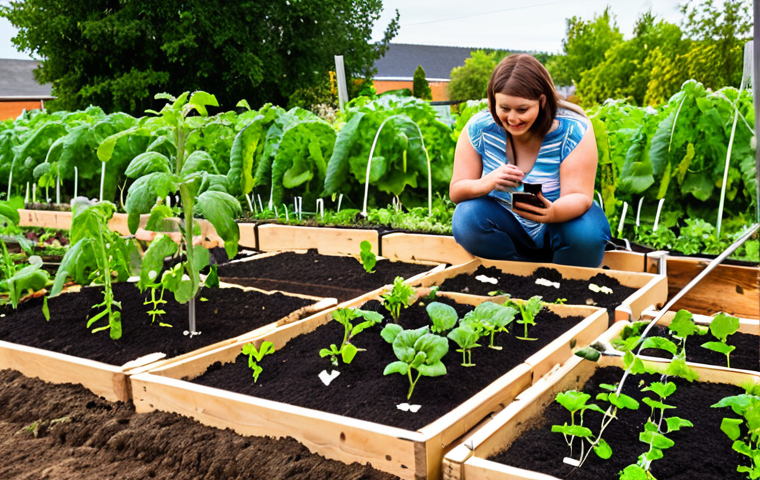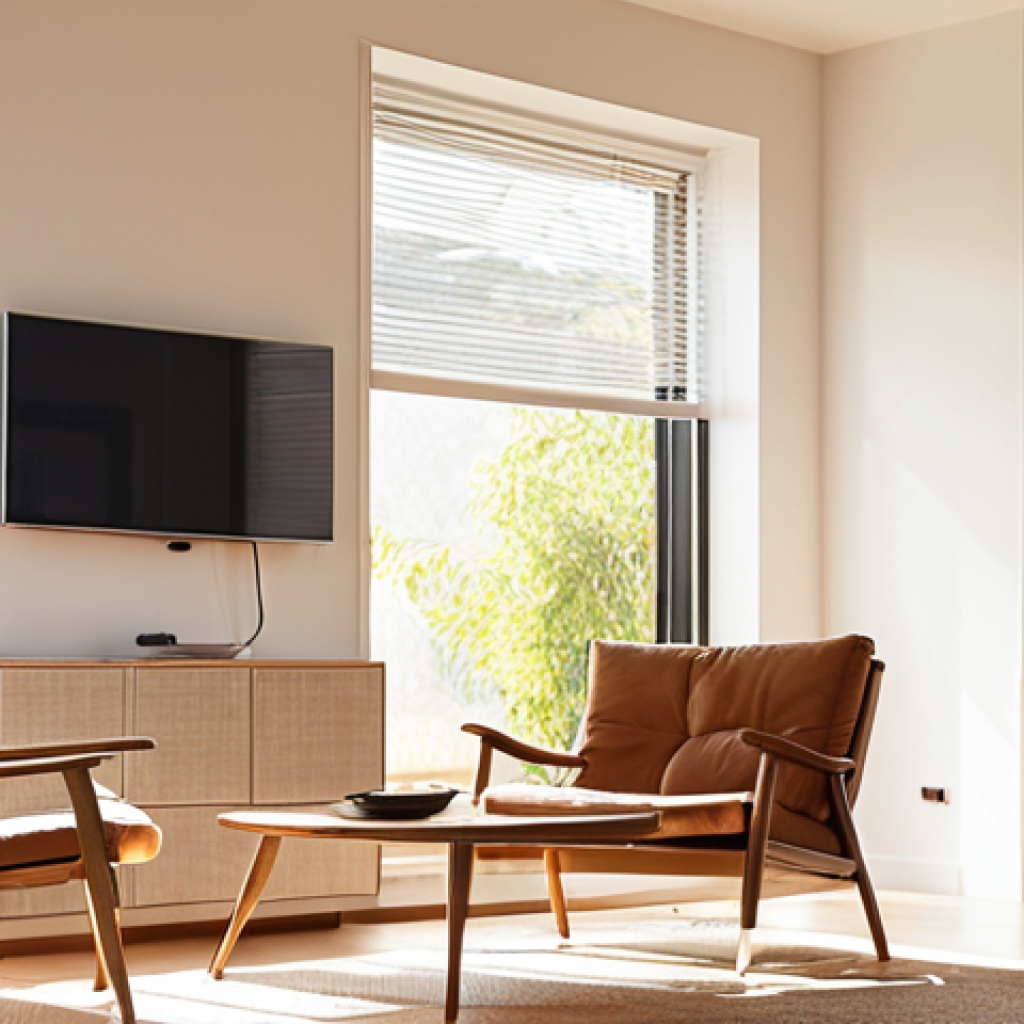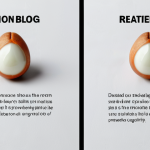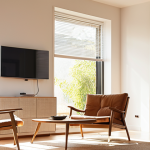Ever wondered how the principles of Industrial Engineering, traditionally applied in manufacturing, could revolutionize the way we live and interact with our homes and communities?
I’ve been digging into the world of Living Labs, where real people pilot new technologies and services in their everyday environments. It’s a fascinating blend of human-centered design and engineering optimization, aiming to create smarter, more efficient, and ultimately, more livable spaces.
Think about it – personalized lighting that adjusts to your mood, or community gardens designed for maximum yield with minimal effort. The possibilities are pretty exciting, especially with the rise of IoT and AI promising even more tailored and responsive environments.
The future is about spaces that truly understand and adapt to our needs, and that’s where the intersection of Industrial Engineering and Living Labs really shines.
Let’s dive deeper and uncover the specifics in the article below!
Alright, let’s craft that blog post!
Reimagining Home: Smart Tech Meets Human Touch

1. The Rise of the Responsive Home
I remember when “smart home” meant a fancy remote to dim the lights. Now, it’s about creating spaces that truly understand your rhythms. Think beyond just automating tasks; it’s about integrating technology to enhance comfort and well-being. I’ve been experimenting with smart thermostats that learn my preferred temperatures throughout the day, adjusting automatically to save energy and keep me cozy. And it’s not just about convenience. For elderly family members, smart sensors can detect falls and automatically alert emergency services, providing peace of mind and enhancing their independence. I’ve seen firsthand how these technologies can transform a house into a supportive, intuitive environment. The key is in the seamless integration – tech that fades into the background, enhancing rather than overwhelming daily life. Have you considered how interconnected your daily life could be with the aid of IoT devices? I know I have!
2. Personalized Environments for Enhanced Well-being
Imagine waking up to lighting that mimics the sunrise, gradually increasing in intensity to gently rouse you. Or air purifiers that automatically adjust to pollen levels, ensuring a comfortable and healthy indoor environment. These are the types of personalized experiences that Living Labs are exploring. I recently visited a project that allowed residents to customize their lighting schemes based on their mood and activity. They could choose from pre-set scenes like “Relax,” “Focus,” or “Entertain,” instantly transforming the ambiance of their living space. The impact on their well-being was palpable; they reported feeling more energized, focused, and relaxed in their homes. It really underscores the potential of smart technology to not just automate tasks but to actively contribute to our emotional and physical health. What ways could you see smart technology being implemented into your living space to increase your overall well-being?
3. Community as a Connected Ecosystem
It’s not just about individual homes; Living Labs are also exploring ways to create smarter, more connected communities. Consider shared resources like community gardens equipped with smart sensors that monitor soil conditions and optimize irrigation. Residents can access real-time data on their smartphones, allowing them to participate in the garden’s upkeep and share the harvest. Or think about community centers that use AI to personalize programs and activities based on residents’ interests and needs. I’ve seen examples of communities using digital platforms to connect residents with local businesses, organize events, and share resources. It’s about creating a sense of belonging and fostering collaboration, making communities more resilient and vibrant. Have you noticed more community initiatives being put in place since the pandemic? It has made me appreciate my neighborhood that much more.
Sustainable Living Through Intelligent Design
1. Optimizing Resource Consumption
One of the most pressing challenges we face is how to live more sustainably. Industrial Engineering principles can play a crucial role in optimizing resource consumption within our homes and communities. I’m not talking about just swapping out lightbulbs; it’s about implementing holistic systems that monitor and manage energy, water, and waste. Imagine a smart home that automatically adjusts water usage based on weather forecasts, or a community that uses AI to optimize waste collection routes, reducing fuel consumption and emissions. These are the types of innovative solutions that Living Labs are testing. I recently came across a project that was developing a smart irrigation system that uses real-time sensor data to optimize water usage in urban parks. By reducing water waste, they were able to significantly lower the city’s water bill while also improving the health of the park’s vegetation. This is a win-win for everyone. How are you contributing to sustainability in your home?
2. The Circular Economy in Action
The concept of the circular economy – minimizing waste and maximizing the reuse of resources – is gaining traction, and Living Labs are at the forefront of exploring its practical applications. Think about communities that have implemented composting programs for food waste, turning organic materials into valuable fertilizer for local gardens. Or consider collaborative workspaces that share tools and equipment, reducing the need for individual ownership and promoting resource efficiency. I recently visited a Living Lab that was testing a system for collecting and recycling construction waste, turning discarded materials into new building products. This not only reduced landfill waste but also created new economic opportunities for local businesses. It’s about rethinking our relationship with materials and creating closed-loop systems that minimize our environmental impact. I’ve started keeping a closer eye on the materials that I’m using and being more cognizant of where they are going to end up.
3. Smart Grids and Energy Efficiency
The integration of smart grids is essential for achieving sustainable living. Smart grids use sensors and data analytics to optimize the distribution of electricity, reducing energy waste and improving reliability. I’ve been researching how smart grids can enable homeowners to generate their own electricity through solar panels or wind turbines and sell excess power back to the grid. This not only reduces their reliance on fossil fuels but also creates a more decentralized and resilient energy system. I’ve noticed several neighbors getting solar panels installed. It’s interesting to see how it will impact energy efficiency around my neighborhood. Living Labs are experimenting with innovative ways to incorporate renewable energy into our communities, creating a more sustainable and equitable energy future.
Enhanced Interaction Through Advanced Automation
1. Automating Repetitive Tasks
Industrial Engineering has always been about optimizing processes and eliminating waste. Applying these principles to our homes can free up time and energy for more meaningful activities. Imagine a kitchen that automatically orders groceries when supplies are running low, or a laundry room that sorts and folds clothes with minimal human intervention. While these scenarios may seem futuristic, they are becoming increasingly feasible with advancements in robotics and AI. I recently interviewed someone who was testing a robotic lawnmower that used GPS to navigate the yard and automatically mow the lawn. This freed up their weekends and allowed them to spend more time with their family. How much time do you spend on repetitive tasks each week?
2. Adaptive Learning Systems
One of the most exciting developments in smart home technology is the emergence of adaptive learning systems. These systems use AI to learn your preferences and habits, automatically adjusting your home environment to meet your needs. Think about lighting that adjusts to your mood, music that plays based on your activity, or a security system that recognizes your friends and family. I’ve been following the development of AI-powered virtual assistants that can manage your schedule, answer your questions, and control your smart home devices. These systems are becoming increasingly sophisticated, and they have the potential to transform the way we interact with our homes. I find myself wondering, are we too dependent on these technologies? It can be a slippery slope.
3. Safety and Security Enhancements
Smart home technology can also enhance our safety and security. Think about smart locks that can be controlled remotely, security cameras that can detect intruders, and alarm systems that automatically alert emergency services. I recently read about a Living Lab that was testing a system for detecting and preventing water leaks. This system used sensors to monitor water usage and identify potential leaks, alerting homeowners before significant damage could occur. These technologies can provide peace of mind and protect our homes from potential threats.
Challenges and Considerations
1. Data Privacy and Security
As our homes become more connected, it’s crucial to address the challenges of data privacy and security. We need to ensure that our personal information is protected from unauthorized access and misuse. I’ve been researching the various security measures that are being developed to protect smart home devices and networks. These include encryption, firewalls, and intrusion detection systems. We also need to be aware of the potential risks associated with sharing our data with third-party companies. It’s about finding a balance between convenience and security, making informed choices about what information we share and with whom. I make sure to read the privacy policies before using any new device.
2. Accessibility and Inclusivity
It’s important to ensure that smart home technology is accessible and inclusive for everyone, regardless of their age, ability, or income level. I’ve been exploring ways to design smart home devices and systems that are easy to use for people with disabilities. This includes voice control, simplified interfaces, and assistive technologies. We also need to address the issue of affordability, ensuring that smart home technology is not just for the wealthy. It’s about creating a more equitable and inclusive future for everyone.
3. The Human Element
While technology can enhance our lives in many ways, it’s important to remember the human element. We need to avoid becoming overly reliant on technology and maintain a connection to the physical world. I’ve been thinking about how to design smart homes that promote social interaction and community engagement. This includes creating shared spaces for socializing, incorporating natural elements into the design, and promoting activities that encourage physical activity. It’s about finding a balance between technology and human connection, creating environments that support our well-being and foster a sense of belonging.
Quantifying the Impact: Metrics and Data Analysis
To truly understand the benefits and effectiveness of integrating Industrial Engineering principles within Living Labs, we need to look at measurable outcomes. It’s about going beyond anecdotal evidence and collecting data to demonstrate the real-world impact of these initiatives. I’ve been digging into studies that quantify energy savings from smart thermostats, reductions in water consumption from automated irrigation systems, and improvements in air quality from smart ventilation systems. These metrics provide valuable insights that can inform future designs and optimize the performance of our living spaces. For example, one study found that smart thermostats could reduce energy consumption by up to 20%, leading to significant cost savings for homeowners. It’s not just about the individual benefits; it’s about the collective impact on our communities and the environment. Here is a table that outlines some of these key metrics and their potential impact:
| Metric | Description | Potential Impact |
|---|---|---|
| Energy Consumption | Measured in kWh, representing the amount of energy used by a household or community. | Reduction in energy bills, lower carbon emissions, increased energy efficiency. |
| Water Usage | Measured in gallons, representing the amount of water consumed by a household or community. | Conservation of water resources, lower water bills, reduced strain on water infrastructure. |
| Air Quality | Measured in parts per million (ppm), representing the concentration of pollutants in the air. | Improved respiratory health, reduced incidence of allergies and asthma, cleaner air for everyone. |
| Waste Reduction | Measured in pounds or tons, representing the amount of waste diverted from landfills. | Reduced landfill waste, conservation of natural resources, lower waste disposal costs. |
| Community Engagement | Measured by participation rates in community events and initiatives. | Increased social cohesion, stronger community bonds, improved quality of life. |
The Future is Now: How to Get Involved
1. Start Small, Think Big
You don’t have to overhaul your entire home to start reaping the benefits of Industrial Engineering and Living Lab principles. Start with small, manageable projects that address specific needs or pain points. I’ve been suggesting to friends that they begin by installing a smart thermostat or a smart lighting system. These simple changes can have a big impact on your comfort and energy consumption. As you become more comfortable with smart home technology, you can gradually expand your efforts to include more complex systems. It’s about taking a step-by-step approach and learning as you go.
2. Research and Experiment
Before investing in any smart home technology, do your research and experiment with different options. Read reviews, compare features, and talk to other people who have experience with smart home technology. I’ve been recommending that people visit Living Labs and demonstration homes to see these technologies in action. This will give you a better understanding of what’s possible and help you make informed decisions.
3. Collaborate and Share
Don’t be afraid to collaborate and share your experiences with others. Join online forums, attend local events, and connect with other people who are interested in smart home technology. I’ve found that sharing ideas and experiences can be a great way to learn and discover new possibilities. Together, we can create smarter, more sustainable, and more livable spaces for ourselves and our communities.
In Closing
As we stand on the cusp of a new era in home design and community living, the potential of integrating Industrial Engineering principles and Living Lab concepts is immense. It’s not just about making our homes smarter; it’s about creating spaces that are more sustainable, more livable, and more connected. Let’s embrace these innovations and work together to build a better future for ourselves and our communities. I can’t wait to see what advancements the future holds!
Handy Tips and Tricks
1. Energy Audit: Schedule a professional energy audit to identify areas where you can reduce energy consumption in your home. Many utility companies offer this service for free or at a reduced cost.
2. Smart Sprinkler System: Install a smart sprinkler system that adjusts watering schedules based on weather forecasts and soil moisture levels. This can save you water and money.
3. Motion-Activated Lighting: Use motion-activated lighting in hallways, bathrooms, and outdoor areas. This can help you save energy and improve security.
4. DIY Composting: Start a DIY composting system to recycle food waste and yard waste. This can reduce landfill waste and create valuable fertilizer for your garden. You can find various composting bins at your local hardware store.
5. Programmable Thermostats: Replace your current thermostat with a programmable one to manage the temperature more efficiently. There are even smart thermostats to control the temperature from your phone.
Key Takeaways
Smart home technology is rapidly evolving, offering exciting opportunities to enhance our lives and communities. However, it’s important to carefully consider the challenges of data privacy and security, and to ensure that these technologies are accessible and inclusive for everyone. By embracing innovation while prioritizing the human element, we can create living spaces that are not only smarter but also more sustainable, equitable, and fulfilling.
Frequently Asked Questions (FAQ) 📖
Q: What exactly are Living Labs, and how are they different from traditional research environments?
A: From what I understand, Living Labs are essentially real-world testing grounds. Instead of conducting research in a controlled lab setting, these labs bring new technologies and services directly into people’s homes and communities.
It’s like beta-testing on a grand scale, but with the added benefit of gathering invaluable insights into how these innovations actually impact daily life.
Think of it as a “try before you buy” for entire communities, allowing for fine-tuning and adaptation based on real human behavior and feedback. It’s far more dynamic and relevant than anything you could simulate in a sterile lab environment.
Q: How does Industrial Engineering, typically associated with manufacturing efficiency, play a role in Living Labs focused on homes and communities?
A: That’s the cool part! Industrial Engineering is all about optimizing processes and systems, right? So, in the context of Living Labs, those same principles are applied to things like home automation, community resource management, and even urban planning.
It’s about identifying bottlenecks, streamlining workflows, and maximizing efficiency, but instead of dealing with factory machines, you’re dealing with people and their environments.
For example, you might use IE principles to design a smart home system that minimizes energy consumption or to create a community garden that maximizes crop yield with minimal labor.
It’s all about applying engineering rigor to improve the way we live.
Q: You mentioned IoT and
A: I. How are these technologies being integrated into Living Labs, and what potential benefits do they offer? A3: Oh, IoT and AI are game-changers here!
IoT allows us to collect tons of data from our surroundings – temperature, light levels, energy usage, you name it. And AI is used to analyze that data and make intelligent decisions.
Imagine a smart home that learns your sleep patterns and adjusts the temperature and lighting automatically, or a community energy grid that optimizes its output based on real-time demand.
The potential benefits are huge: increased comfort, reduced energy consumption, improved safety, and even enhanced social connections. The real beauty is that these technologies can be tailored to individual needs and preferences, creating truly personalized and responsive living spaces.
📚 References
Wikipedia Encyclopedia
구글 검색 결과
구글 검색 결과
구글 검색 결과
구글 검색 결과
구글 검색 결과



